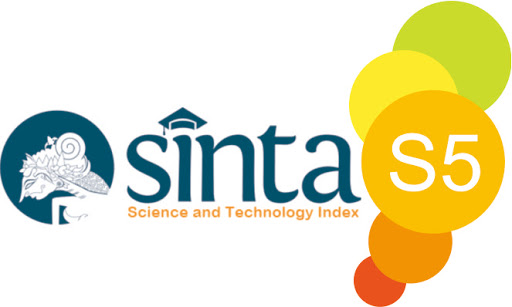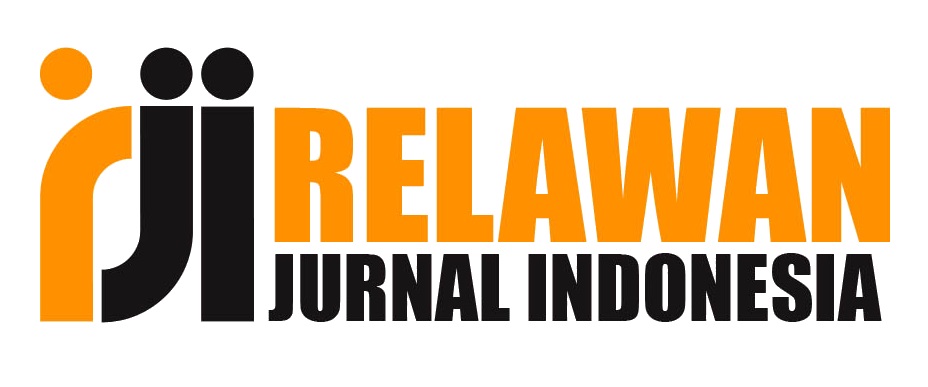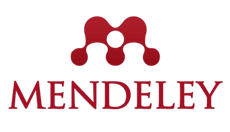The Impact of Interactive Animation Media on Pancasila Character Development in Islamic Education
DOI:
https://doi.org/10.57176/jn.v5i1.189Keywords:
Character, Islamic Religious Education, learning media, pancasila, technologyAbstract
Penelitian ini bertujuan untuk menganalisis pengaruh video pembelajaran interaktif berbasis animasi dalam Pendidikan Agama Islam terhadap pengembangan karakter siswa yang berlandaskan nilai-nilai Pancasila. Penelitian ini menggunakan pendekatan metode campuran dengan desain eksplanatori sekuensial, yang menggabungkan analisis kuantitatif dan kualitatif untuk memperoleh pemahaman yang komprehensif. Data kuantitatif dikumpulkan melalui angket dan tes hasil belajar dari 50 siswa di SD Inpres Mannurukki dan SD Inpres Bontobila. Pemilihan kedua sekolah ini didasarkan pada kondisi geografisnya yang berdekatan, sehingga memungkinkan perbandingan untuk mengidentifikasi kesenjangan atau kesamaan dalam penerapan media teknologi pada PAI. Data dianalisis menggunakan statistik deskriptif dan inferensial (korelasi Pearson/Spearman). Hasil analisis kuantitatif menunjukkan tidak ada korelasi yang signifikan antara penggunaan media berbasis teknologi dengan hasil belajar Pendidikan Agama Islam yang berorientasi pada pengembangan karakter Pancasila, dengan koefisien korelasi sebesar -0,096 dan nilai signifikansi sebesar 0,507. Temuan ini justru memberikan kontribusi penting, yang mengindikasikan bahwa teknologi saja tidak cukup untuk membentuk karakter tanpa diperkuat oleh peran guru dan pendekatan humanis. Sementara itu, temuan kualitatif dari wawancara mendalam dengan dua guru dan siswa mengungkapkan bahwa meskipun media teknologi dinilai menarik, efektivitasnya dalam membentuk karakter masih terbatas. Peran guru sebagai panutan, diskusi langsung, dan konteks sosial terbukti lebih dominan dalam menginternalisasi nilai-nilai Pancasila. Oleh karena itu, media berbasis teknologi perlu diintegrasikan secara bijaksana ke dalam strategi pembelajaran yang menekankan pendekatan humanis dan kontekstual.
______________________________________________________________________________________
This study aims to analyze the influence of interactive animation-based learning videos in Islamic Religious Education on students’ character development grounded in Pancasila values. The research employed a mixed-method approach with a sequential explanatory design, combining quantitative and qualitative analyses to obtain a comprehensive understanding. Quantitative data were collected through questionnaires and learning achievement tests administered to 50 students from SD Inpres Mannurukki and SD Inpres Bontobila. These two schools were selected based on their geographical proximity, allowing for a comparative analysis to identify gaps or similarities in the implementation of technology-based media in Islamic Religious Education (PAI). The data were analyzed using descriptive and inferential statistics (Pearson/Spearman correlation). The quantitative findings indicated no significant correlation between the use of technology-based media and learning outcomes in Islamic Religious Education oriented toward Pancasila character development, with a correlation coefficient of -0.096 and a significance value of 0.507. This finding provides an important insight, suggesting that technology alone is insufficient to shape character without being reinforced by the teacher’s role and a humanistic approach. Meanwhile, qualitative findings from in-depth interviews with two teachers and students revealed that although technology-based media were considered engaging, their effectiveness in shaping character remained limited. The teacher’s role as a role model, direct discussions, and social context proved to be more influential in internalizing Pancasila values. Therefore, technology-based media should be integrated wisely into learning strategies that emphasize humanistic and contextual approaches.
References
Abyakta, S., Pendidikan, J., Rita, R., Ternate, I., Dakwah, A. M., Syamsuriah, & Ardi. (2023). Urgensi Pemahaman Moderasi Beragama di Indonesia. Jurnal Ilmiah Islamic Resources, 19(2), 1–10. https://doi.org/10.32505/hikmah.v14i1.5956
Akbar, A. (2021). Pentingnya Kompetensi Pedagogik Guru. JPG: Jurnal Pendidikan Guru, 2(1), 23. https://doi.org/10.32832/jpg.v2i1.4099
Al Ayyubi, I. I., Abdullah, D. S., Nurfajriyah, D. S., Yasmin, S., & Hayati, A. F. (2024). Peran Orang Tua Dalam Pendidikan Islam Berdasarkan QS At-Tahrim Ayat 6. Al Muhafidz: Jurnal Ilmu Al-Qur’an Dan Tafsir, 4(1), 71–83. https://doi.org/https://doi.org/10.57163/almuhafidz.v4i1.90
Al Ayyubi, I. I., Bukhori, H. A., Komara, C., Yulianti, E., & Mahriah, E. (2024). Pengaruh Model Cooperative Learning terhadap Hasil Belajar Matematika dalam Keberagaman Peserta Didik. Journal of Nusantara Education, 3(2), 30–38. https://doi.org/https://doi.org/10.57176/jn.v3i2.94
Al Ayyubi, I. I., Hayati, A. F., Azizah, E. N., Herdiansyah, R., & Mirayanti, U. (2024). Pendidikan Humanis Paulo Freire Dalam Pembelajaran Matematika MI. Wulang: Jurnal Pendidikan Guru Madrasah Ibtidaiyah, 1(1), 1–15. http://ojs.staisdharma.ac.id/index.php/wjp/article/view/178
Al Ayyubi, I. I., Muhaemin, A., Martini, S., Andriani, A., & Yasmin, S. (2024). Moderasi Beragama dalam Pendidikan Agama Islam berdasarkan Literatur Al-Qur’an dan Hadits. SYAIKHONA: Jurnal Magister Pendidikan Agama Islam, 2(1), 67–84. https://doi.org/https://doi.org/10.59166/syaikhona.v2i1.180
Al Ayyubi, I. I., Riyadi, D. A., Zahra, A., & Nugraha, M. F. (2024). Penerapan Model Discovery Learning Pada Pembelajaran Sejarah Kebudayaan Islam Berdasarkan Jenis Kelamin Siswa. Kaffah: Jurnal Pendidikan Dan Sosio Keagamaan, 3(1), 26–43. http://www.jurnal.unmabanten.ac.id/index.php/kaffah/article/view/920
Al Ayyubi, I. I., Rohmatulloh, R., Saputra, D., Fitriyah, D., & Masfuroh, A. S. (2024). Increasing Student Learning Motivation through the Application of Problem-Based Learning Models. International Journal Humanities Perspective, 1(1), 13–18. https://ejournal.papanda.org/index.php/ijhp/article/view/591
Anggiana, A., & Gunawan, A. (2023). Challenges and Opportunities for Human Resource Management in the Industrial Era 4.0: Focus on the Integration of Technology and Human Resources. Jurnal Ekonomi Dan Bisnis Digital, 1(2), 252–258. https://jurnal.ittc.web.id/index.php/jebd/article/view/428
Dahri, N. A., Yahaya, N., Al-Rahmi, W. M., Aldraiweesh, A., Alturki, U., Almutairy, S., Shutaleva, A., & Soomro, R. B. (2024). Extended TAM based acceptance of AI-Powered ChatGPT for supporting metacognitive self-regulated learning in education: A mixed-methods study. Heliyon, 10(8), e29317. https://doi.org/https://doi.org/10.1016/j.heliyon.2024.e29317
Dhir, H. K. (2021). Handbook of research on barriers for teaching 21st-century competencies and the impact of digitalization. IGI Global.
Fauzi, H. A. H., Hidayat, W., Al Ayyubi, I. I., Nurhikmah, & Al-Ghatnaini, R. A. S. (2025). Work Stress Levels At Madrasah Tsanawiyah Arrukhshatul’ulum: The Challenges of Digitalization in Developing Islamic Educational Institutions. Mudir: Jurnal Manajemen Pendidikan, 7(1), 19–27. https://doi.org/https://doi.org/10.55352/mudir.v7i1.1469
Grass Ramírez, J. F., Muñoz, R. C., & Zartha Sossa, J. W. (2023). Innovations and trends in the coconut agroindustry supply chain: a technological surveillance and foresight analysis. Frontiers in Sustainable Food Systems, 7, 1048450. https://doi.org/https://doi.org/10.3389/fsufs.2023.1048450
Hayatunnisa, H., Fejrin, J., Azizah, M. S. N., Ilham, M., Gastiadirrijal, W., Syahidin, S., & Parhan, M. (2024). Konsep Etika Dan Moralitas Sebagai Materi Dalam Pembelajaran Pendidikan Agama Islam. ALFIHRIS: Jurnal Inspirasi Pendidikan, 2(2), 77–84. https://doi.org/https://doi.org/10.59246/alfihris.v2i2.765
Huda, I. A. (2020). Perkembangan teknologi informasi dan komunikasi (TIK) terhadap kualitas pembelajaran di sekolah dasar. Jurnal Pendidikan Dan Konseling (JPDK), 2(1), 121–125. https://doi.org/https://doi.org/10.31004/jpdk.v2i1.622
Hutami, I. M., & Widiana, G. T. (2021). Pengembangan Media Komik pada Pembelajaran Sejarah Kebudayaan Islam Untuk Meningkatkan Keterampilan Berpikir Kritis Siswa. Jurnal Pendidikan Islam, 5(1), 33–50. https://journal.unipdu.ac.id/index.php/jpi/article/view/2593
Jailani, M., Wantini, W., Suyadi, S., & Bustam, B. M. R. (2021). Meneguhkan Pendekatan Neurolinguistik dalam Pembelajaran: Studi Kasus pada Pembelajaran Bahasa Arab Madrasah Aliyah. Jurnal Pendidikan Agama Islam Al-Thariqah, 6(1), 151–167. https://doi.org/10.25299/al-thariqah.2021.vol6(1).6115
Kamal, M. (2023). Pentingnya Pendidikan Agama Islam dalam Meningkatkan Nilai Karakter dan Moral Anak di Masa Pandemi. Journal of Islamic Education, 9(1), 43–63. https://doi.org/https://doi.org/10.18860/jie.v9i1.22808
Khumairoh, A. (2022). The Importance of Inculcating Character Education in Facing the Era of Globalization in the 21st Century Generation. Jurnal Pendidikan Karakter, 13(1), 27–37. https://doi.org/10.21831/jpka.v13i1.41787
Kurniati, D. (2022). Penggunaan Media Sosial Dalam Pembelajaran Bahasa Arab Dengan Model Blended Learning. Ta’limi| Journal of Arabic Education and Arabic Studies, 1(2), 119–138. https://doi.org/https://doi.org/10.53038/tlmi.v1i2.32
Martínez-Bravo, M. C., Sádaba Chalezquer, C., & Serrano-Puche, J. (2022). Dimensions of digital literacy in the 21st century competency frameworks. Sustainability, 14(3). https://doi.org/https://doi.org/10.3390/su14031867
Muhibah, S. (2020). Model Pengembangan Pendidikan Karakter Melalui Pendidikan Agama Di Perguruan Tinggi: Studi Kasus Di Universitas Serang Raya. EDUKASI: Jurnal Penelitian Pendidikan Agama Dan Keagamaan, 18(1), 54–69. https://doi.org/10.32729/edukasi.v18i1.683
Murharyana, M., Al Ayyubi, I. I., Rohmatulloh, R., & Ikromi, S. N. (2024). The Effects of Islamic Religious Education Learning on Students’ Motivation. At-Tadzkir: Islamic Education Journal, 3(1), 1–14. https://doi.org/https://doi.org/10.59373/attadzkir.v3i1.44
Mutaqin, M. Z., Lestari, D. A., Solihin, S., Al-Ayyubi, I. I., & Rahmawati, S. (2024). Factors in Religious Culture to Increase Tolerant Attitude of Gen-Z Among Urban Muslims. Akademika: Jurnal Pemikiran Islam, 29(1), 73–86. https://doi.org/https://doi.org/10.32332/akademika.v29i1.9145
Nafiati, D. A. (2021). Revisi taksonomi Bloom: Kognitif, afektif, dan psikomotorik. Humanika, Kajian Ilmiah Mata Kuliah Umum, 21(2), 151–172.
Nafisa, D., & Wardono. (2019). Model Pembelajaran Discovery Learning Berbantuan Multimedia Untuk Meningkatkan Kemampuan Berpikir Kritis Siswa. PRISMA, Prosiding Seminar Nasional Matematika, 2, 854–861.
Neethirajan, S. (2024). Artificial intelligence and sensor innovations: enhancing livestock welfare with a human-centric approach. Human-Centric Intelligent Systems, 4(1), 77–92. https://doi.org/https://doi.org/10.1007/s44230-023-00050-2
Nikou, S., De Reuver, M., & Mahboob Kanafi, M. (2022). Workplace literacy skills—how information and digital literacy affect adoption of digital technology. Journal of Documentation, 78(7), 371–391. https://doi.org/https://doi.org/10.1108/JD-12-2021-0241
Ningsih, N. L. A. B. H. (2023). The Importance of Game-Based Learning in English Learning for Young Learners in the 21st Century. The Art of Teaching English as a Foreign Language, 4(1), 25–30. https://doi.org/10.36663/tatefl.v4i1.492
Nurhikmah, N. (2024). Character Education Islam From the Views of Imam Al-Ghazali. Jurnal Al Burhan, 4(1), 53–66. https://doi.org/10.58988/jab.v4i1.300
Pancawardana, H., Al Ayyubi, I. I., Rohmatulloh, R., & Murharyana, M. (2023). The Influence of Nonformal Education on Students’ Cognitive Formation. KOLOKIUM Jurnal Pendidikan Luar Sekolah, 11(2), 236–243. https://doi.org/https://doi.org/10.24036/kolokium.v11i2.612
Priyanto, A. (2020). Pendidikan Islam dalam Era Revolusi Industri 4.0. J-PAI: Jurnal Pendidikan Agama Islam, 6(2). https://doi.org/https://doi.org/10.18860/jpai.v6i2.9072
Rani, S. (2023). Transformasi Komunikasi Dakwah dalam Era Digital: Peluang dan Tantangan dalam Pendidikan Islam Kontemporer. AL-MIKRAJ Jurnal Studi Islam Dan Humaniora (E-ISSN 2745-4584), 4(1), 207–216. https://doi.org/https://doi.org/10.37680/almikraj.v4i1.3513
Sabarudin, M., Al Ayyubi, I. I., Suryana, I., Rohmatulloh, R., & Saepulloh, S. (2023). The Effect of the SAVI Learning Model on Arabic Writing Skills: A Case Study at MTS Arrukhsatul ‘Ulum, West Bandung. Khulasah: Islamic Studies Journal, 5(2), 102–111. https://doi.org/https://doi.org/10.55656/kisj.v5i2.114
Sabrina, A. R. (2019). Literasi Digital Sebagai Upaya Preventif Menanggulangi Hoax. Communicare : Journal of Communication Studies, 5(2), 31. https://doi.org/10.37535/101005220183
Sirojuddin, A. (2023). Utilization of Creative and Innovative Aurora 3D Media-based Learning Technology. JoCS: Journal of Community Service, 1(1), 77–88. https://doi.org/https://doi.org/10.59355/jocs.v1i1.95
Souza, A. S. C. de, & Debs, L. (2024). Concepts, innovative technologies, learning approaches and trend topics in education 4.0: A scoping literature review. Social Sciences & Humanities Open, 9, 100902. https://doi.org/https://doi.org/10.1016/j.ssaho.2024.100902
Syarifudin, A. (2021). Pengaruh Penggunaan Media Pembelajaran Berbasis Visual terhadap Prestasi Belajar Mata Pelajaran Aqidah Akhlak Siswa di MIN Putussibau. Piwulang: Jurnal Pendidikan Agama Islam, 3(2), 92–104. https://doi.org/http://dx.doi.org/10.32478/piwulang.v3i2.656
Tamphu, S., Suyitno, I., Susanto, G., Budiana, N., & Salim, M. R. (2024). Building bridges to the future of learning : Exploring artificial intelligence research using R- Studio assisted bibliometrics. Cogent Education, 11(1). https://doi.org/10.1080/2331186X.2024.2417623
Tijsma, G., Hilverda, F., Scheffelaar, A., Alders, S., Schoonmade, L., Blignaut, N., & Zweekhorst, M. (2020). Becoming productive 21st century citizens: A systematic review uncovering design principles for integrating community service learning into higher education courses. Educational Research, 62(4), 390–413. https://doi.org/10.1080/00131881.2020.1836987
Ulfah, U., & Arifudin, O. (2021). Pengaruh aspek kognitif, afektif, dan psikomotor terhadap hasil belajar peserta didik. Jurnal Al-Amar: Ekonomi Syariah, Perbankan Syariah, Agama Islam, Manajemen Dan Pendidikan, 2(1), 1–9. https://doi.org/http://ojs-steialamar.org/index.php/JAA/article/view/88
Wahyono, B., Rapih, S., & Boungou, W. (2023). Unleashing the wordsmith: Analysing the stock market reactions to the launch of ChatGPT in the US Education sector. Finance Research Letters, 58, 104576. https://doi.org/https://doi.org/10.1016/j.frl.2023.104576
Widianto, E. (2021). Pemanfaatan Media Pembelajaran Berbasis Teknologi Informasi. Journal of Education and Teaching, 2(2), 213. https://doi.org/10.24014/jete.v2i2.11707
Downloads
Published
How to Cite
Issue
Section
License
Copyright (c) 2025 Maslani, Rifqi Rohmatulloh, Muhammad Heri Numaeri, Mochamad Aqil

This work is licensed under a Creative Commons Attribution-ShareAlike 4.0 International License.
You are free to:
- Share — copy and redistribute the material in any medium or format for any purpose, even commercially.
- Adapt — remix, transform, and build upon the material for any purpose, even commercially.
- The licensor cannot revoke these freedoms as long as you follow the license terms.
Under the following terms:
- Attribution — You must give appropriate credit , provide a link to the license, and indicate if changes were made . You may do so in any reasonable manner, but not in any way that suggests the licensor endorses you or your use.
- ShareAlike — If you remix, transform, or build upon the material, you must distribute your contributions under the same license as the original.
- No additional restrictions — You may not apply legal terms or technological measures that legally restrict others from doing anything the license permits.
Notices:
You do not have to comply with the license for elements of the material in the public domain or where your use is permitted by an applicable exception or limitation .
No warranties are given. The license may not give you all of the permissions necessary for your intended use. For example, other rights such as publicity, privacy, or moral rights may limit how you use the material.
















